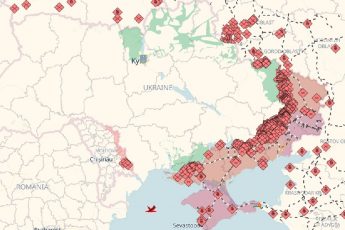Chinese is the hardest language in the world, that’s why people chose it quite rarely for learning. Meanwhile more than 1.3 billion people speak this language, and this is almost 1/5 of the population of the entire Earth.
This language is rightfully considered the oldest among the existing dialects. However, these are not all secrets and interesting features of this incredible language! This collection contains 20 informative facts about this wonderful languagethat may even surprise you.
1. According to the latest data, about 1.3 billion people worldwide speak this language. They mainly live in China, Singapore, Taiwan, the Philippines. They also leave in other countries where there are Chinese communities. You can find them in Russia, the USA, Australia and Asia. There are practically no Chinese language in South America and Africa.
2. We call this language Chinese, but many linguists separate this group of dialects into a separate branch. At present, there are about 10 dialects, which differ mainly in vocabulary and phonetics. The differences are so significant that many Chinese people do not understand each other.
3. The most common dialect of this language is North Chinese. It is spoken by about a billion Chinese around the world.
The main population speaking North Chinese lives in the northern and western parts of China
Sometimes this language is called “mandarin”, especially by Western literature, but the Chinese themselves call it “putonghua”.
4. Consequently, where did the word “mandarin” come from in relation to Chinese? The fact is that there is such a so-called common North Chinese dialect in Europe. This name was attached to it many centuries ago when merchants from Portugal began to build relations with China.
At first they called officials “Mantri”, which later transformed into Mandarin. And since the official language in this country has a name of the hieroglyph of guanhua, or “the language of officials”, it soon became known as “mandarin”.
5. By the way, the name of the mandarin has a direct relation with the above fact. When it first came from China to Europe, the Europeans immediately began to call it, like all Chinese, mandarin, nevertheless it is a tangerine!
6. Chinese writing appeared 4 thousand years ago. The oldest “document” with hieroglyphs is attributed to the XVII century BC. There were “jiaguven” – divinatory letters on the shells of turtles in the state of Shang-Yin. The first hieroglyphs on animal bones in this area were discovered only in the 20th century. That is why scientists are still studying this stage of development of the writing of the Shang era.
7. The written language of China is fundamentally different from all other languages and consists not of letters, but of hieroglyphs.
Each character means a single syllable, sound or a whole word
Also, writing is different in that it does not go from left to right, but from top to bottom and from right to left. However, in recent years, the Chinese have preferred to use traditional European writing. The classic arrangement can only be found in publications with cultural value – art books.
8. In total, there are about 80 thousand different characters in the Chinese language at the moment, but most of them are no longer in use. For life and understanding 80% of the text is enough to learn just 500 characters. For a comfortable understanding of 99% of the text, 2400 characters are enough.
9. Chinese is a tonal language. It has four main tones: high even, ascending (from medium to high), descending to the middle level and then ascending, descending and one additional neutral. A tone can completely change the meaning of a word.
10. The main difficulty in learning this language is to pronounce tones correctly.
You can make a big mistake only by choosing the wrong tone
A good example is the phrase “wo xiang wen ni” with different keys can mean “I want to ask you” and “I want to kiss you.”
11. The Chinese themselves from different parts of the country may well not understand each other. Their spoken dialect is so very different from each other, but have a common grammar. Thus, linguists often argue whether these dialects are different languages, because they are completely different from each other. Disputes are disputes, but for now, Chinese is one language with different dialects.
12. Studies have shown that people who speak Chinese use both temporal lobes of their brain. But English speakers use only the left side. This is just related to the tonality.
13. Chinese writing has a very strange logic, incomprehensible to a foreigner.
Linguists advise to study the language alongside the culture of the country
Since they are practically inseparable from ancient times.
14. In 1958, the official standard of Chinese romanization, pinyin, was introduced. With the help of a special system, hieroglyphs got the form of Latin transcription. The author of pinyin was the Chinese linguist Zhou Yuguang. By the way, he also had a long life expectancy – he lived 111 years.
15. In this regard, the Chinese keyboard simply does not exist in nature. Who else would place more than 5 thousand characters on the keyboard! The Chinese communicate using pinyin, a group of hieroglyphs attached to each letter of the Latin alphabet. You need to choose the option you need using the right number.
16. In 1946, Chinese became one of the official languages of the United Nations. However, until 1974 practically no one used it as a working language.
17. At the same time, Chinese has an incredibly simple grammar. In it there are not even gender and number, there are no conjugations of verbs.
It could be the simplest language in the world, if not for the huge number of hieroglyphs and tonality difference
18. For this, the Chinese officially hit the Guinness Book of Records as one of the most complex languages in the world. Therefore, those who complain about the difficulty of learning can reassure themselves with this fact – this is not fiction!
19. Other languages are not common in China, even in public areas. For example, you can rarely meet an English speaker among the employees of the airport. Tourists have to deal with the intricacies of Chinese!
20. By the way, Japanese and Chinese have little in common. The Japanese took many characters from the Chinese characters. Although the pronunciation of these languages are completely different. However, the Chinese themselves sometimes do not understand each other, what can we say about the Japanese!







